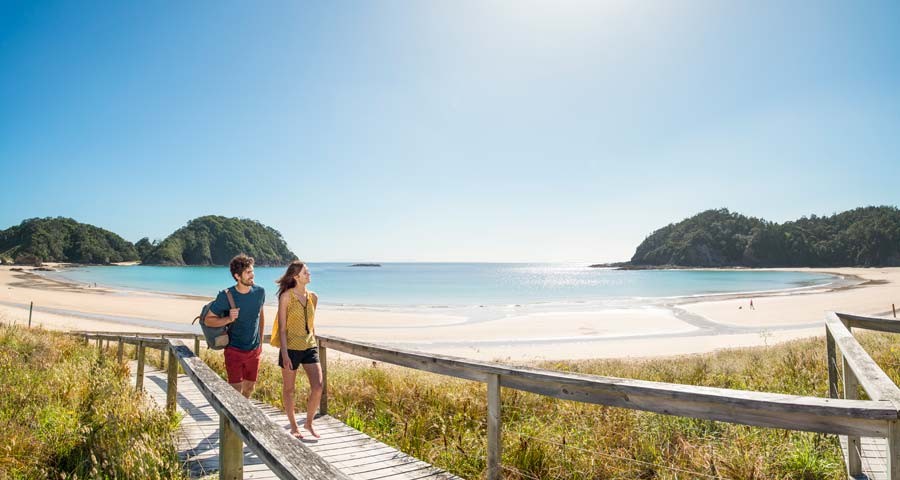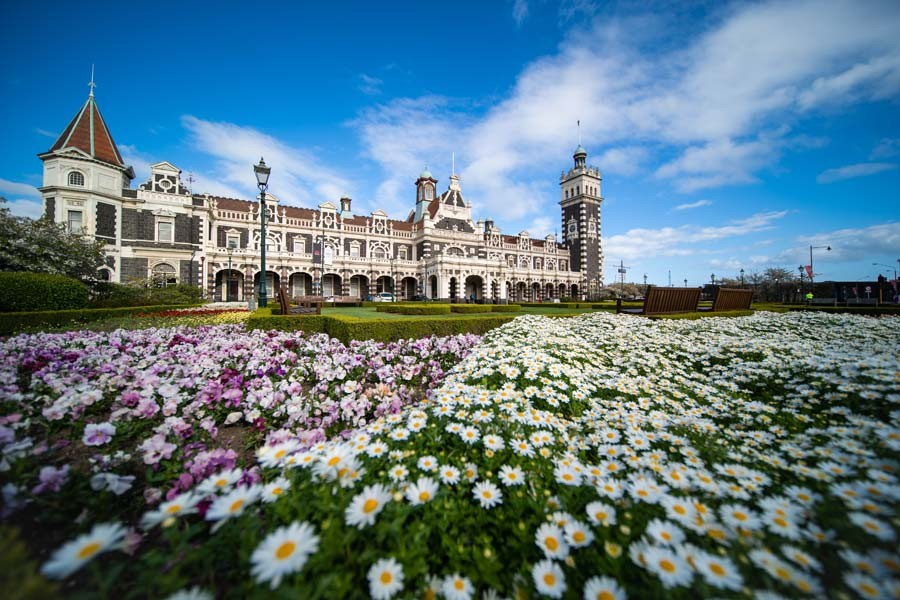Discover the roots of New Zealand’s human history in Northland, a region blessed with a spectacular range of coastal scenery and bathed in subtropical warmth. A wealth of activities are available, ranging from sailing to the thrill of sand-tobogganing.
Around the Northland Region
From ancient forests to a coastline etched with quiet coves and white-sand beaches, Northland is a place of contrasts. It’s tranquil and unhurried – a place where you can spend days sailing amid unpopulated islands and then dine at a marina restaurant. In a region dense with history, the line between past and present thins in forests that have stood for millennia and on harbours where some of the first people to arrive in Aotearoa New Zealand first dipped paddles many centuries ago.
Regional Destinations
Mangawhai White-sand beaches just 90 minutes’ drive from Auckland.
Waipū Country village with a Scottish flavour.
Whangārei NZ’s northernmost city.
Tutukaka Gateway to the Poor Knights Islands.
Kawakawa Famous for its Hundertwasser-designed public toilets.
Paihia Base for exploring the Bay of Islands.
Opua Main marina in the Bay of Islands.
Waitangi Home to the Waitangi Treaty Grounds.
Kerikeri History, fresh produce and craft galleries.
Kaitāia Last major town before Cape Reinga.
Ahipara Southern end of Ninety Mile Beach.
Omapere & Opononi Hokianga villages popular for beach holidays.
Dargaville Main centre on Northland’s west coast.
Matakohe Visit the Kauri Museum.
Highlights
East Coast Cruise to the Poor Knights Islands – one of the world’s best dive sites. Soak up Scottish history in Waipu Village. Ride the surf on the Tutukaka Coast. Beach-hop along the white sands of Bream Bay.
Bay of Islands Watch an authentic Maori cultural show at the Waitangi Treaty Grounds. Go swimming with dolphins in the warm coastal waters. Catch the passenger ferry from Paihia to Russell. Follow the Kerikeri Art & Craft Trail to find hidden treasures in artists’ studios. Take a boat cruise through a flotilla of islands to the Hole in the Rock. Skydive over blue water studded with green islands.
Far North Join a 4WD tour to the tip of Cape Reinga. Sand-toboggan down massive dunes at Ninety Mile Beach. Discover gum-digging history at Ahipara. Eat fish ’n’ chips at the famous Mangonui chip shop in Doubtless Bay.
West Coast Visit Tāne Mahuta, a 1500-year-old kauri tree in Waipoua Forest. Explore local history in the Kauri Museum at Matakohe. Visit the statue of ‘Opo the Friendly Dolphin’ at Opononi.
Place of Spirits
Cape Reinga offers astonishing coastal views. Far below (290 metres, to be precise), the Tasman Sea and Pacific Ocean meet in a turbulent clash, producing waves up to 10 metres high in a phenomenon known as the Columbia Maelstrom. According to Māori legend, this is where departing souls leave to travel back to the ancestral homeland of Hawaiki. The 800-year-old pohutukawa on the cliff is sacred to Māori and should be left well alone.
Additional Fields
-
Photo: Alistair Guthrie, Tourism New Zealand














